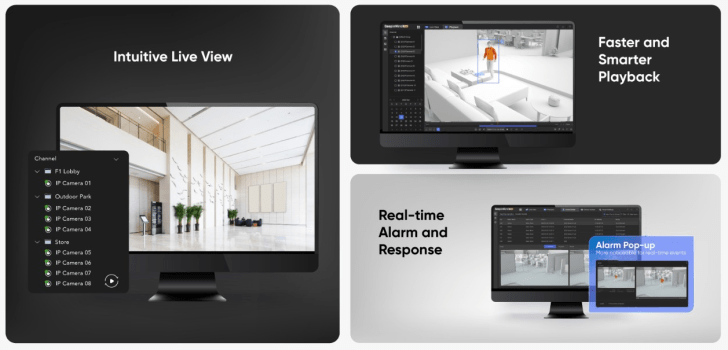How to connect an IP camera to a Hikvision NVR 5, Adding cameras to your Network Video Recorder (NVR) is a crucial step in any CCTV setup. Not only does it allow you to store and access all your camera recordings in one place, but it also simplifies camera configuration. In this simple step-by-step guide, we’ll show you how to add cameras to a Hikvision NVR using the new NVR 5 web interface.
Why add cameras to an NVR?
Before you start…
Before anything, to be able to add your IP cameras, you need to make sure that:
How to connect an IP camera to a Hikvision NVR 5
How to add your cameras using the V5 GUI…
Step 1:
Open a web browser and enter the IP address of your NVR in the address bar. If you are not sure what this is, use the SADP tool to find it.
Step 2:
Log in to the NVR using the “admin” username and password you have set on it.
Step 3:
Go to: Device Access > Device Configuration > PoE Settings
If you are connecting your camera via the Plug-and-Play method, then make sure that Network Camera Plug-and-Play is enabled on the POE port you will be connecting the camera to on this page.
For any camera with a cable run under 100m, leave the Network Cable Distance as Short Distance.
If you are connecting your camera manually by IP address, disable the Network Camera Plug-and-Play option for the channel that you plan to add the camera to.
Step 4:
Go to: Device Access > Device > Video Device
For any Plug-and-Play camera, just make sure that it is in its inactive default state and then connect it to the port you reserved in step 3. After 20 seconds or so, the camera Status should turn to Connecting and then Online (you may need to click on Refresh to see this).
For Manually added cameras, if you can see the camera in the List of Online Devices section, then just tick the box for the camera and then click + Add to Device List, which will then automatically add it to one of the channels you disabled Plug-and-Play on in the last step.
Alternatively…
Click on +Add at the top of the page and fill out the fields as follows:
IP Address: Enter the IP address of your camera, using the ‘Test’ button to verify there is a camera at that address.
Device Name: This can be anything you like, as it is the name the camera will show with on your NVR.
Protocol: Select the camera’s manufacturer from this list, or failing that, use the ONVIF protocol (your camera will need to have ONVIF enabled for this to work).
Management Port: Enter the Server port set on the camera, which you can find in the SADP tool or in Network>Basic Settings>Port in the camera’s web browser interface. If you haven’t changed this, it is usually 8000 by default.
User Name: “admin” or the username of any other users set up on that camera.
Password: The password set with that user on the camera – if this is the same as the ‘Default Activation Password‘ you have set on the NVR, then you can tick this box instead.
Transfer Protocol: ‘Auto’ is normally best.
When these are completed, click OK.
Your camera should then appear in the list of devices with an assigned channel, and an Online status, meaning it has been successfully added.
Extra tips…
How do I reset my Hikvision device to factory settings?
In some cases, you’ll need to reset your Hikvision device to its inactive factory state. This could be if you’re passing the system on to somebody else; if you’ve forgotten your password; or simply if something has gone wrong during the configuration, meaning you need to start afresh.
There are a couple of ways of doing this, the method you’ll use depends on whether you have a password to log into the device.
Please see the simple steps for doing each below:
Via the device’s backend in a web browser or iVMS-4200:
If you are able to log into your device’s configuration menu in iVMS-4200 or the web browser interface, then the easiest way to reset it is on the Upgrade & Maintenance page here. The steps below show you how to find this page in both interfaces.
Step 1:
iVMS-4200:
In a web browser:
Step 2:
In both iVMS-4200 and a web browser:
Factory reset by using the device’s pushbutton:
On the majority of Hikvision’s newer camera models, there will be a pushbutton on the camera which will allow to carry out a hard reset without needing to log into it. This is most useful when you have forgotten your password, as it allows you to set a new password on the camera while avoiding much of the faff involved in doing this through the SADP tool.
Step 1:
Step 2:
- Disconnect the camera’s power supply.
- Press the reset button and keep it held down.
- Restore the power supply while continuing to hold down the button.
- Keep the button pressed for a further 10 seconds.
- Release the button and wait for the camera to reboot.




